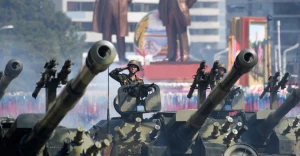
New camouflage invention for Ukrainian army, Odesa's air defense, fighting in Zaporizhzhia sector. Weekly military results by Zgurets
Discussing missile defense over Odesa, situation in the Zaporizhzhia sector, and new technologies for Ukraine's Armed Forces that can protect soldiers and equipment from Russian drones and thermal imagers
Missile defense umbrella has appeared over Odesa
The Ukrainian Armed Forces have managed to protect another Ukrainian city from Russian ballistic missiles – and that is Odesa. This conclusion comes from a statement by the spokesperson of the Ukrainian Naval Forces, Dmytro Pletenchuk, who reported that an Iskander missile was shot down on July 18. This is a significant event, as the Russians have repeatedly used ballistic missiles against Odesa, targeting both the city and port facilities, sometimes with tragic consequences for the residents. Now we have examples of such a missile being intercepted. As we know, ballistic missiles can be intercepted by either Patriot or SAMP/T systems. It appears that one of these systems is now covering Odesa.
Of course, one could argue that information about acquiring new defensive capabilities shouldn't have been disclosed prematurely, but a video of the Russian missile being shot down has already appeared. It's important to understand that the Naval Forces responded because the Russian electronic intelligence systems definitely detect the operation of powerful anti-aircraft missile systems and radar stations. Therefore, the presence of these systems around Odesa likely did not go unnoticed. It can be confidently said that those anti-aircraft missile systems and radar stations are no longer where they were positioned, but the protective "umbrella" over Odesa is functioning.
Combat actions in the Zaporizhzhia direction
The press officer of the National Guard's 14th Chervona Kalyna Brigade, Mykola Koval, spoke about the battlefield dynamics in the Zaporizhzhia direction.
"The situation is not complicated, it's controlled by our forces. We conduct aerial reconnaissance around the clock and continuously repel Russian assaults. Over the past week, we fought off about 20-30 Russian infantry assaults, but they do not use equipment and move in small assault groups, usually consisting of two or three people. Regarding the assaults in the past day, there were six massive assaults near Mala Tokmachka and Shcherbaky – all were successfully repelled. The Russian military used guided aerial bombs very extensively in this direction, heavily shelling both settlements and Ukrainian positions. The intensity has now decreased slightly, probably because we are also working hard, especially Ukrainian air defense units and anti-aircraft gunners, who prevent the enemy from approaching too closely. Currently, their primary tactics involve artillery, Solntsepyoks, and Grads multiple rocket launchers, which means they do not cease daily shelling of Ukrainian positions; there is never a quiet hour," Koval explained.
A serviceman shares that Russian forces use all types of drones, often in pairs, to locate the positions of the Ukrainian Armed Forces and the National Guard. Therefore, the soldiers must camouflage themselves as much as possible, especially from Lancets. Active electronic warfare (EW) is also ongoing. Meanwhile, Russia uses a large number of FPV drones. The enemy can launch 200-300 such devices daily against the Ukrainian Defense Forces. The Russians’ problem is that they do not use them as effectively as our soldiers do. Ukrainian FPV drones help repel Russian assaults and save the lives of Ukrainian troops.
"We have now caught up in terms of having drones with night thermal vision. We use them around the clock, both day and night. If we detect the enemy, we must destroy them, and it doesn't matter if it's morning, evening, or night – we constantly eliminate Russian personnel. However, at night they have realized how much damage we inflict and have started to camouflage themselves very well, which complicates our work a bit. Nevertheless, as soon as we detect them, we immediately start taking action, either by dropping bombs from drones or using FPV drones," emphasized the press officer.
The 14th Brigade has its own recruitment team that works with volunteers. Anyone can view the candidate questionnaire on social media platforms like Facebook, Instagram, and on their Telegram channel. You can also contact them via the provided phone number.
"As for specialties, our brigade includes many units, from operational battalions, infantry, and artillery to tankers, UAV pilots, scouts, snipers, engineers, communications specialists, and medics. We have plenty of such specialties and positions available. We are looking for motivated individuals who will stand with us to defeat the enemy," Koval concluded.
Camouflage technologies for Ukraine's Armed Forces
Protecting Ukrainian troops at night is crucial, which is why Eduard Pukanych has developed a new anti-infrared coating that creates protective systems for both soldiers and equipment. When a person wears a cloak treated with this special substance, they become invisible in infrared light. This is the basis for camouflage in our conditions.
The entrepreneur explained that the idea for this invention came from media reports about the supposed creation of an "invisibility cloak" by the Russians. Pukanych became interested in the topic and realized that similar equipment is made from so-called anti-infrared fabrics.
"All these fabrics have certain drawbacks – you can't go against the laws of thermodynamics. Any object, like a human body, emits heat, and if this heat is absorbed by the material – the anti-infrared fabric – the material itself heats up and leaves a thermal signature. Even a difference of one or two degrees can be noticeable in a thermal imaging device. So I decided to take a different approach and began experimenting with creating an anti-infrared substance, not just fabric, as that's not new technology. I turned to nature, so to speak, and started studying how various animals camouflage themselves in nature. This led me to develop an anti-infrared substance," the inventor explained.
Pukanych did not reveal how he achieved these results, as it is confidential information. However, he emphasized that his invention, like any other, requires refinement, which he is currently working on.
Regarding the anti-infrared coating for military use, the inventor has approached the Ministry of Defense and registered his development: "Currently, my development is undergoing defense expertise, so we are waiting for a response."
At the same time, Pukanych discussed the challenges faced by inventors in Ukraine.
"A few months ago, I proposed a certain concept to the Ministry of Defense. What’s the issue? In Ukraine, there are many self-taught inventors, as they are called. Our society is not used to taking them seriously. But if we look at history, it’s no secret that figures like Edison and Bell, who are among the most famous inventors in the world, had dozens or even hundreds of patents. They created the precursors to telephones, light bulbs, and other technologies. They were all self-taught, not formally educated scientists. The issue I raised is about taking a different approach. It’s one thing to invest money in a scientific institute, but whether the staff there have the desire and inspiration to create something new is another. If we examine global practices, we see that all technologies are created by startups – new companies or large private firms interested in developing something new. I believe the testing process is dragging on. These issues should be addressed more quickly. There should be a curator who works with inventors, making the process more efficient. We have a huge scientific potential among these self-taught individuals that is not being utilized in Ukraine," the entrepreneur concluded, adding that inventors should not fear simplicity, as it has led to the development of cars and other technologies.
- News












































